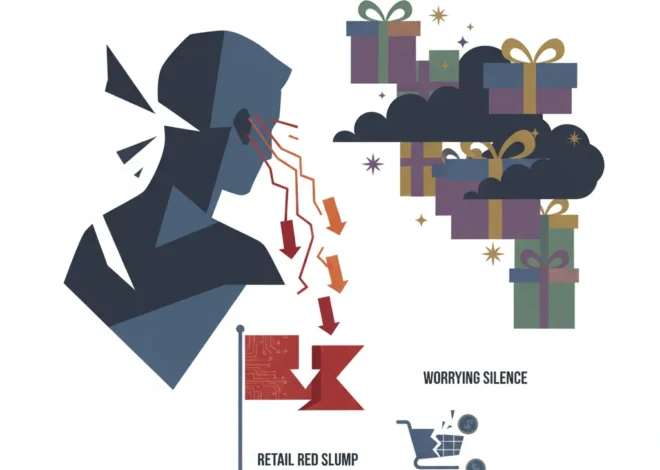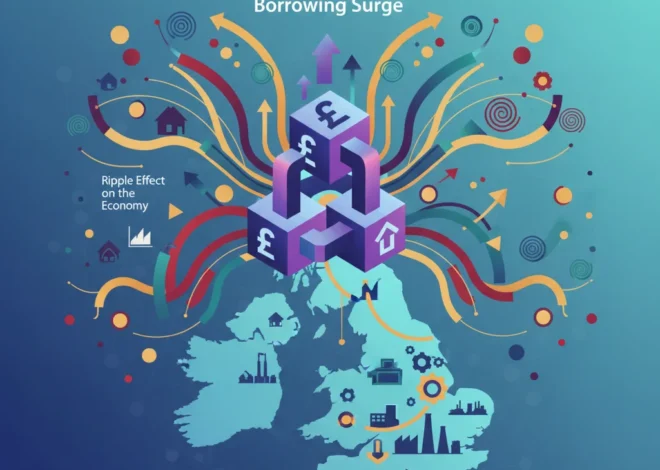
Echoes of 2008? A Banking Titan’s Stark Warning on the $1.7 Trillion Private Credit Market
A Ghost from the Past: Is History Repeating Itself in Modern Finance?
In the world of high finance, certain warnings carry more weight than others. When the chairman of a global banking giant like UBS speaks of “looming systemic risk,” investors, regulators, and the entire market listen. That’s precisely what happened when Colm Kelleher, a veteran of the 2008 financial crisis, drew a chilling parallel between the current boom in private credit and the subprime mortgage disaster that brought the global economy to its knees.
Speaking at an event, Kelleher didn’t mince words. He expressed deep concern that the insurance industry, in its quest for higher returns, is fueling a bubble in the private credit market. His most alarming claim? That insurers are engaging in “ratings shopping,” a practice eerily reminiscent of how banks sought favorable ratings for toxic mortgage-backed securities before 2008. The warning shot has been fired: a $1.7 trillion market, largely hidden from public view, may be nurturing the seeds of the next financial contagion.
This isn’t just a technical debate for financial professionals. It’s a critical issue that touches upon the stability of our entire economic system. Understanding the dynamics of private credit, the risks involved, and the implications of this high-level warning is essential for anyone involved in investing, banking, or the broader economy.
The Meteoric Rise of Private Credit: A New Pillar of Modern Finance
To grasp the gravity of Kelleher’s warning, we first need to understand what private credit is and why it has become such a dominant force. In simple terms, private credit is lending that happens outside the traditional banking system. Specialized investment funds, often run by private equity behemoths like Blackstone and Apollo, raise capital from institutional investors (like pension funds and insurers) and lend it directly to companies.
This corner of the finance world exploded in popularity for two primary reasons:
- Post-2008 Regulation: In the wake of the financial crisis, regulations like Dodd-Frank and Basel III were implemented to de-risk the banking sector. These rules made it more expensive and difficult for traditional banks to make certain types of loans, especially to medium-sized or higher-risk companies. This created a massive void in the lending market, and private credit funds eagerly stepped in to fill it.
- The Search for Yield: For over a decade, central banks kept interest rates at historic lows. This was a nightmare for institutions like insurance companies and pension funds, which need to generate steady returns to meet their long-term obligations. The higher interest rates offered by private credit loans became an almost irresistible alternative to the paltry returns available in public markets like the stock market or government bonds.
This confluence of factors transformed private credit from a niche strategy into a cornerstone of modern corporate finance. However, its success has also created a new set of challenges, centered on transparency and risk assessment.
The Care-Bot Economy: Why Robots for the Elderly Are Wall Street's Next Trillion-Dollar Frontier
Déjà Vu: The Troubling Parallel of “Ratings Shopping”
Kelleher’s central accusation is that of “ratings shopping.” This is the practice where an issuer of a financial product—in this case, a private credit asset—seeks out a credit rating agency that is likely to give it the most favorable rating. A higher rating (like AAA or AA) suggests lower risk, making the asset more attractive to regulated institutions like insurance companies, which are often required to hold a certain amount of highly-rated assets.
This is where the echoes of 2008 become deafening. Before the crisis, investment banks bundled thousands of risky subprime mortgages into complex securities called Collateralized Debt Obligations (CDOs). They then paid rating agencies to assess these products, and many received coveted AAA ratings. These ratings gave investors a false sense of security, allowing toxic assets to proliferate throughout the global financial system. When the underlying mortgages began to default, the house of cards collapsed.
Kelleher fears a similar dynamic is now at play. “You’re getting ratings shopping… the same thing that happened with the mortgage crisis,” he stated explicitly according to the Financial Times. The concern is that the true risk of these private loans is being understated, allowing insurers to load up on assets that are riskier than they appear on paper. The opacity of the private market—where deals are not publicly disclosed—makes it incredibly difficult for outsiders to verify these ratings.
To better understand the parallels, let’s compare the key risk factors from the pre-2008 era with the current private credit landscape.
| Risk Factor | Pre-2008 Subprime Market | Current Private Credit Market |
|---|---|---|
| Asset Class | Complex securities (MBS, CDOs) backed by subprime home loans. | Direct loans to private companies, often with floating rates and weaker covenants. |
| Opacity & Complexity | Extremely complex and opaque securities, making underlying risk hard to assess. | Loans are private, illiquid, and lack public market pricing, making valuation difficult. |
| Ratings Agency Role | Accused of conflicts of interest, providing AAA ratings to risky assets. | Warned of potential “ratings shopping” to achieve favorable capital treatment for insurers. |
| Key Players | Investment banks, mortgage lenders, and global investors. | Private equity giants, specialized credit funds, and institutional investors (insurers, pensions). |
| Regulatory Blind Spots | The “shadow banking” system of mortgage securitization was poorly understood and regulated. | Non-bank lending operates outside the strict capital requirements imposed on traditional banking. |
The Domino Effect: Why Insurers’ Investments Matter to Everyone
Why is the focus so intensely on the insurance industry? Because insurers are not just any investors. They are the bedrock of the financial system, managing trillions of dollars in assets to ensure they can pay out claims for everything from natural disasters to life insurance policies. Their financial health is paramount.
If these insurers are holding private credit assets that are riskier than their ratings suggest, a significant economic downturn could lead to a wave of corporate defaults. This would cause the value of those assets to plummet, potentially impairing the insurers’ ability to meet their obligations. This is the definition of systemic risk: a failure in one part of the system (private credit) triggers a crisis in another (insurance), which can then cascade across the entire economy. A recent report from the International Monetary Fund highlighted these growing vulnerabilities, noting the “rapid growth and increasing interconnectedness” of the private credit market (source).
Beyond the Handshake: Decoding the Economic Impact of the "Strongest Ever" US-Japan Alliance
Regulators are beginning to take notice. Kelleher’s public call for them to “look at this more and more” is a signal that the era of light-touch oversight for this market may be coming to an end. The challenge for regulators is to impose discipline without stifling a vital source of funding for the corporate world, a delicate balancing act for modern economics.
Implications for Investors and the Future of Finance
This warning has tangible consequences for investors and business leaders. For those invested in the stock market, the stability of banking and insurance stocks is now linked to the health of the private credit ecosystem. A downturn in this area could create significant headwinds for the financial sector.
For individuals and institutions considering investing in private credit funds, it underscores the need for extreme due diligence. The allure of high yields must be balanced against the realities of illiquidity and opacity. It also highlights a potential opportunity in the financial technology space for firms that can develop better tools for analyzing and pricing risk in these private markets, perhaps even leveraging technologies like AI or blockchain for greater transparency in trading and settlement.
Ultimately, Kelleher’s warning is not a prediction of imminent doom, but a call for vigilance. It’s a reminder that financial innovation often outpaces regulation, and that the lessons of 2008—about transparency, conflicts of interest, and hidden leverage—are timeless. The $1.7 trillion question is whether the financial industry and its regulators have truly learned those lessons, or if we are simply watching a familiar script play out with a new cast of characters.
The Milei Tsunami: How Argentina's Election Unleashed a Global Market Shockwave
Conclusion: A Crossroads for a New Financial Era
The rise of private credit is a defining feature of the post-2008 financial landscape. It has provided essential capital to businesses and offered yield-starved investors a lifeline. But as Colm Kelleher’s stark warning illustrates, its rapid, shadowy growth has created vulnerabilities that can no longer be ignored. The comparison to the subprime crisis is a deliberate and powerful one, designed to shake regulators and investors out of their complacency.
Whether this “looming systemic risk” materializes into a full-blown crisis depends on the actions taken now. Greater transparency, more robust risk models, and proactive regulatory oversight are no longer optional—they are essential to ensuring that this vital part of the modern economy supports, rather than subverts, global financial stability.


